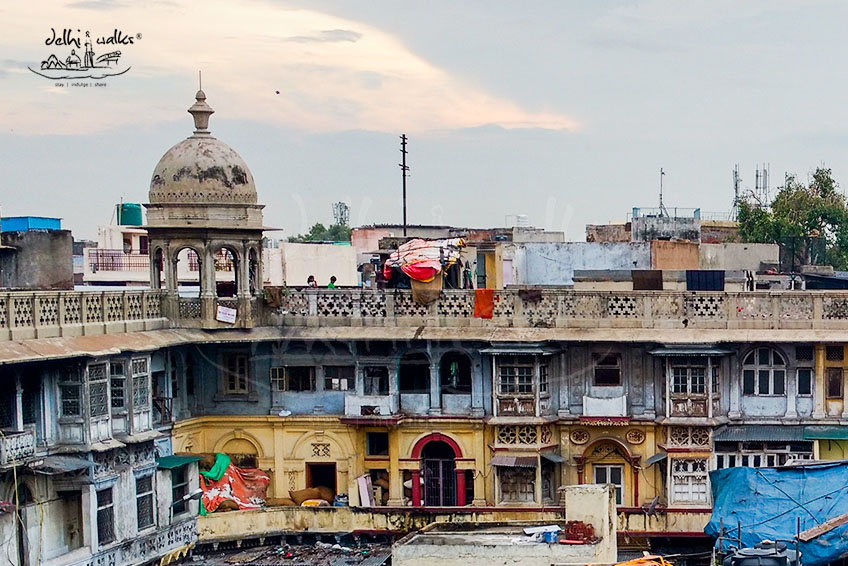When the sun sets at Shahjahanabad the city rises!
Shahjahanabad was the ‘seventh’ city which reflected the Mughal magnificence of Shah Jahan’s vision of 1639.The city is a beautiful amalgamation of religions, culture, food, people and heritage. The best time of the day to witness its beauty is at night, when the city gears up to unwind it the colours of the place. This memorable experience in the walled city of Delhi is curated by ‘Delhi Walks’, a flagship brand of India City Walks that strives to provide unique, memorable city experiences.
The Old Delhi experience begins after sunset at Jama Masjid, one of Shahjahanabad’s most prominent architectural landmarks. A walking tour with ‘Delhi Walks’ will help you understand the grandeur of Shah Jahan’s vision and the kind of resources that the Emperor had at his disposal. You will not be able to go inside the mosque at this hour of the day, but since the mosque is at an elevated area, you can see the grandeur from a distance as well. The elaborate Indo-Islamic architecture and the magnificent courtyard where people still sit and pray, is an exquisite sight to watch.
Stepping out of Shahjahan’s imperial Mosque, you straight enter into the lively alleys pf Old Delhi. Discover the gems of the main streets of Chandni Chowk, when we tell you the stories related to them. It was said that the main street was called as Chandni Chowk because the a tank at the center of this historic street once reflected a moonlight.
This walk promises to enthrall history buffs with the magnificent view of Red Fort on one end, Fatehpuri Masjid on the other and an array of heritage buildings on both ends.
The road staright ahead from Jama Masjid takes us to the most opulent bazaar loaded with a wide array of precious, semi-precious stones which can easily give competition to other streets in India. The street which was once a street lined with jewellery from various corners of the world, has looters eyeing on the wealth that the empire had in terms of Jewellery, which has gone through enough ransack to let it now sell only silver jewellery. But the designs offered here are unmatched to any other place.
A walk through DaribaKalan, would lead you to a small alley called Kinari bazaar which is a haven for those who love to shop till they literally drop with the weight of the bags that they’re carrying. At night, the lanes glitter, pop and shine with the colourful borders, laces and colorful embellishments
Tucked away in the heart of Kinari is a lane that’s easy to miss. This tranquil lane is known as Naughara, which contains nine traditional havelis that belong to the Jain community. Not very from Naughara lies a popular lane called galliparantheywalli. Pack a parantha or two from this alley only to head back to Naughara, to enjoy your moment of peace!
At the extreme end of this symmetrical street lies KhariBaoli, Asia’s largest spice market. A walk through the spice market lets you experience the smell of freshly ground spices, which is a mesmerizing feeling!
The Charm of Old delhi is intoxicating, and charismatic. A walk around Old Delhi is letting yourself immerse into the culture, the history and all that the city has to offer!



